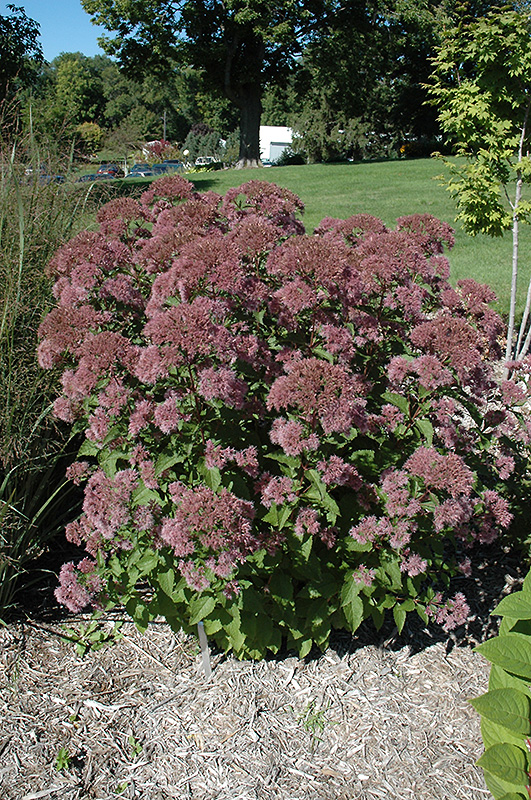Plant Search Tool
Little Joe Dwarf Joe Pye Weed
Eupatorium maculatum 'Little Joe'
Plant Height: 3 feet
Flower Height: 4 feet
Spacing: 24 inches
Sunlight:
![]()
![]()
Hardiness Zone: 2
Other Names: Eupatorium purpureum, Boneset
Description:
Compact growth habit compared to the species, ideal for smaller gardens; features fluffy plumes of mauve-pink flowers, attractive leaves and strong stems; tasty seeds for birds and nectar for butterflies
Ornamental Features
Little Joe Dwarf Joe Pye Weed has masses of beautiful plumes of lightly-scented pink flowers at the ends of the stems from late summer to late fall, which emerge from distinctive fuchsia flower buds, and which are most effective when planted in groupings. The flowers are excellent for cutting. Its serrated narrow leaves emerge dark green in spring, turning forest green in color throughout the season. The burgundy stems can be quite attractive.
Landscape Attributes
Little Joe Dwarf Joe Pye Weed is an herbaceous perennial with an upright spreading habit of growth. Its relatively coarse texture can be used to stand it apart from other garden plants with finer foliage.
This is a relatively low maintenance plant, and is best cleaned up in early spring before it resumes active growth for the season. It is a good choice for attracting butterflies to your yard, but is not particularly attractive to deer who tend to leave it alone in favor of tastier treats. It has no significant negative characteristics.
Little Joe Dwarf Joe Pye Weed is recommended for the following landscape applications;
- Mass Planting
- Hedges/Screening
- General Garden Use
Planting & Growing
Little Joe Dwarf Joe Pye Weed will grow to be about 3 feet tall at maturity extending to 4 feet tall with the flowers, with a spread of 3 feet. When grown in masses or used as a bedding plant, individual plants should be spaced approximately 24 inches apart. It grows at a medium rate, and under ideal conditions can be expected to live for approximately 15 years. As an herbaceous perennial, this plant will usually die back to the crown each winter, and will regrow from the base each spring. Be careful not to disturb the crown in late winter when it may not be readily seen!
This plant does best in full sun to partial shade. It is quite adaptable, prefering to grow in average to wet conditions, and will even tolerate some standing water. It is not particular as to soil type or pH. It is somewhat tolerant of urban pollution. This is a selection of a native North American species. It can be propagated by division; however, as a cultivated variety, be aware that it may be subject to certain restrictions or prohibitions on propagation.

